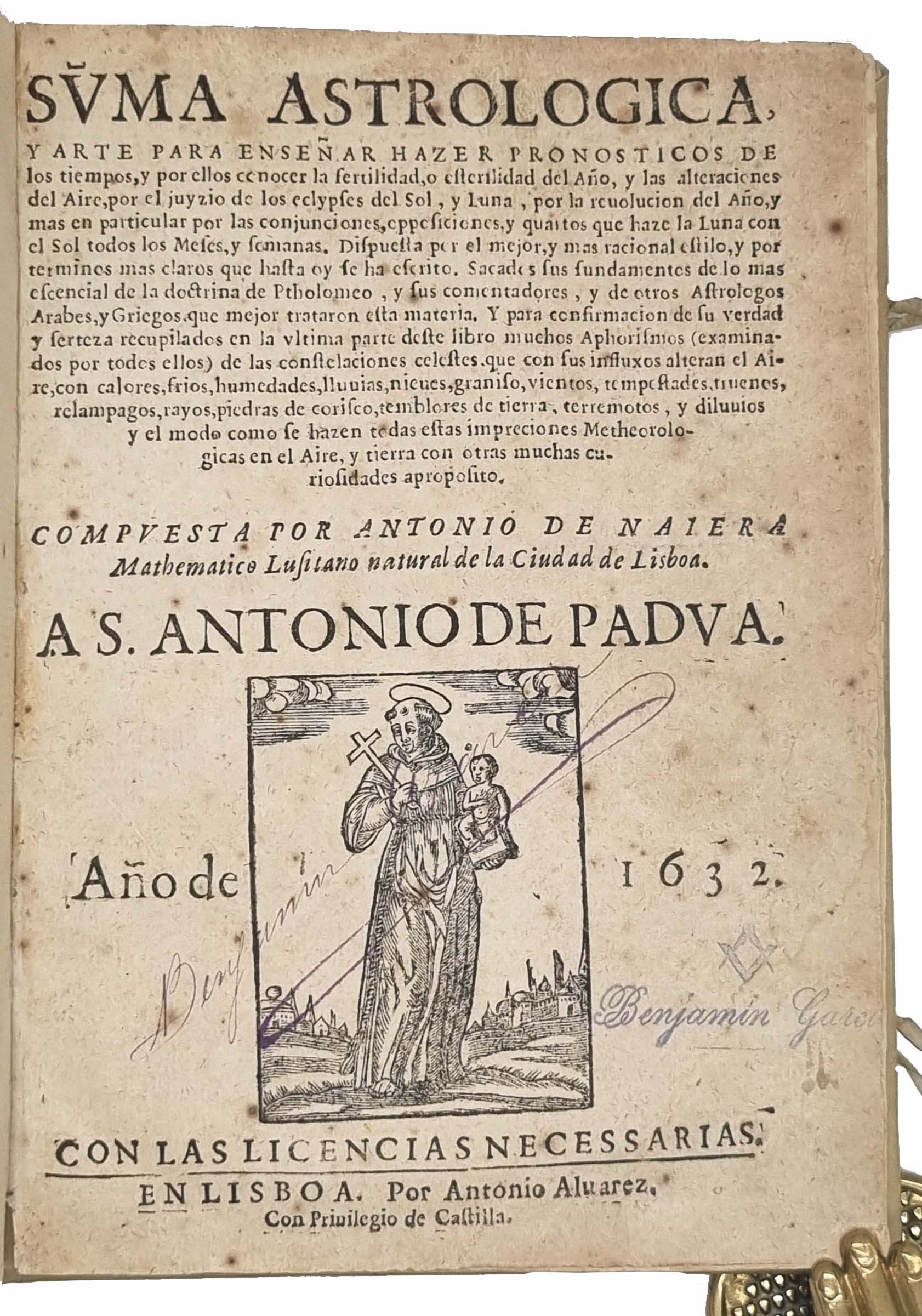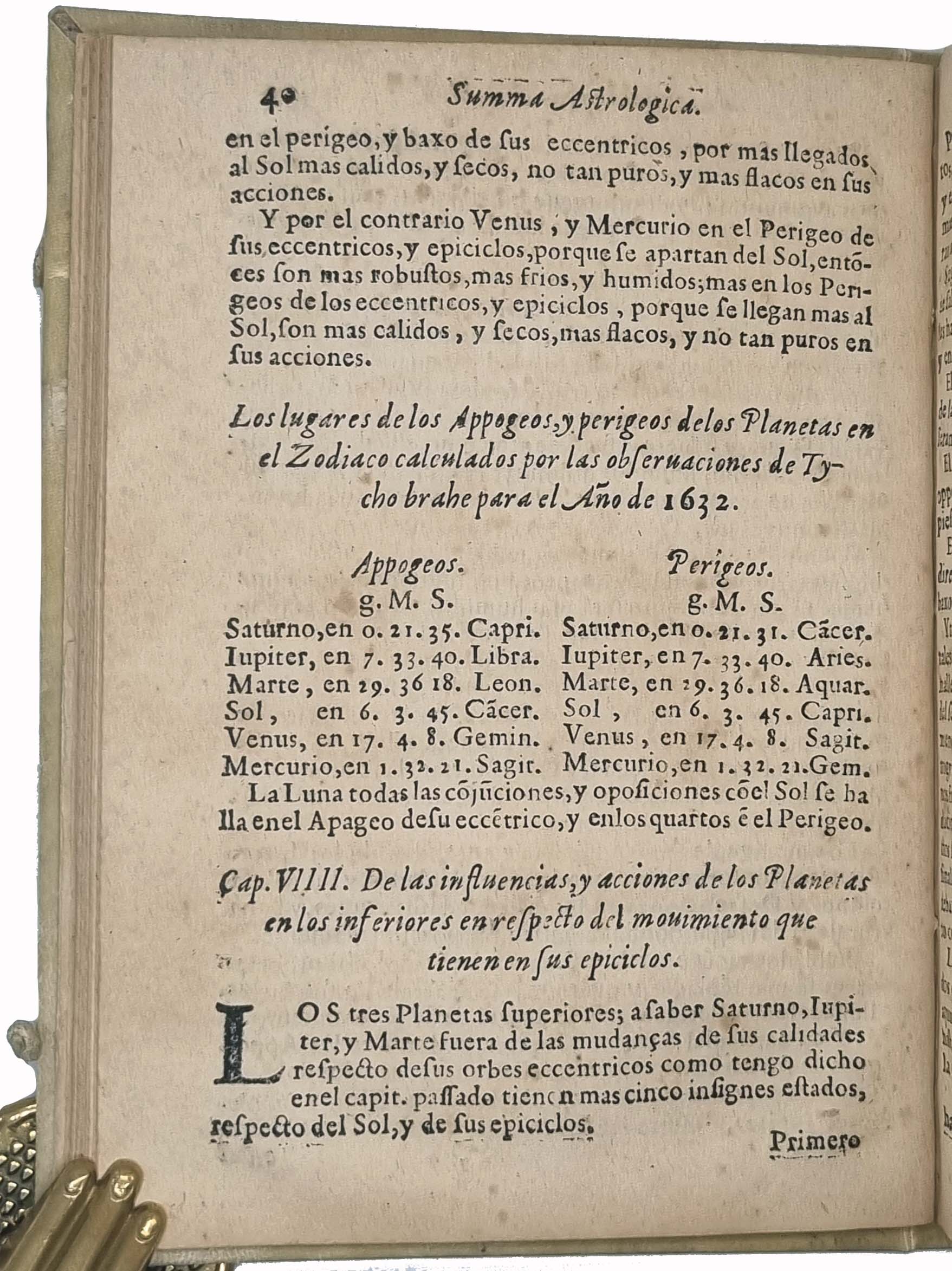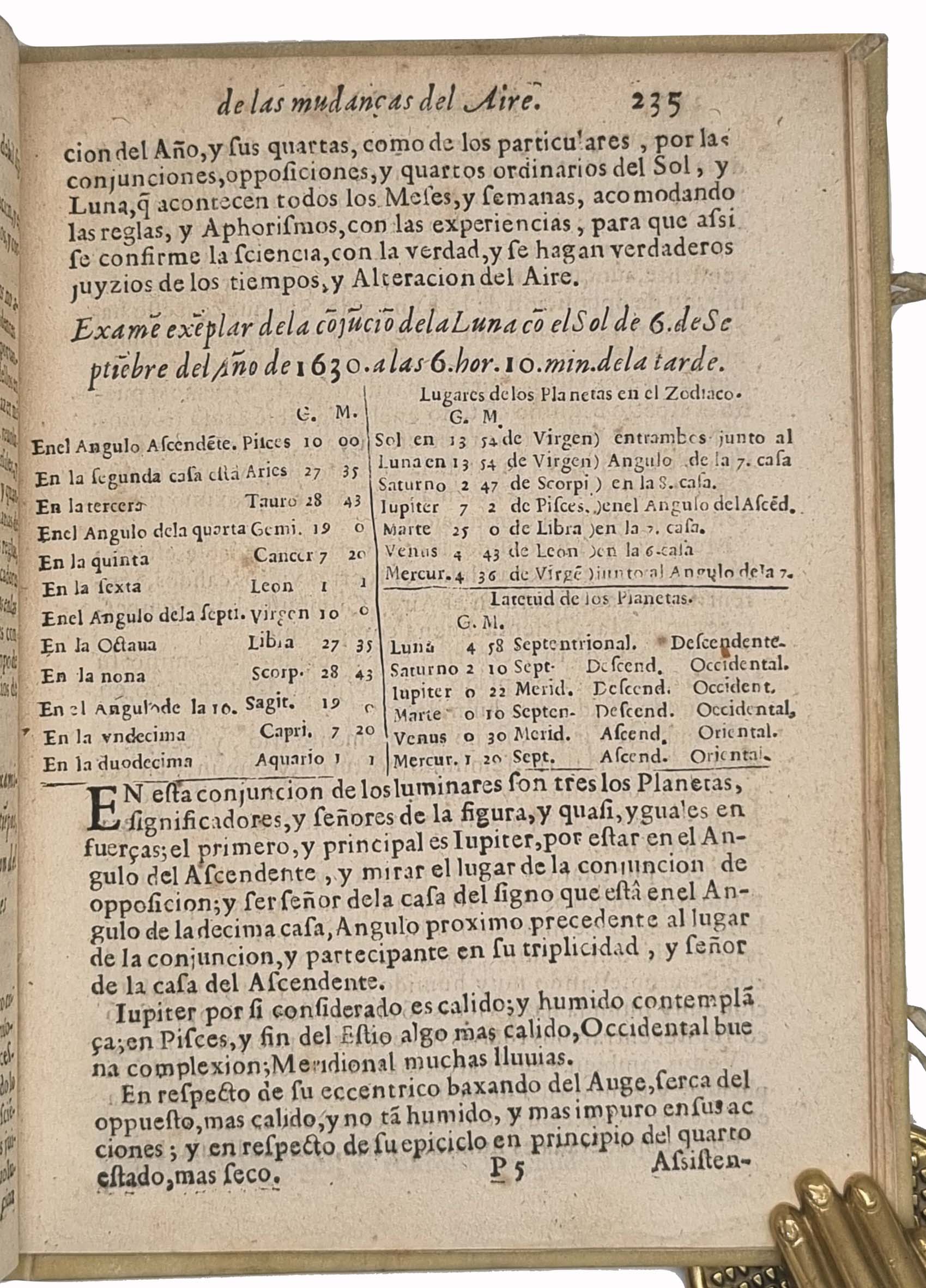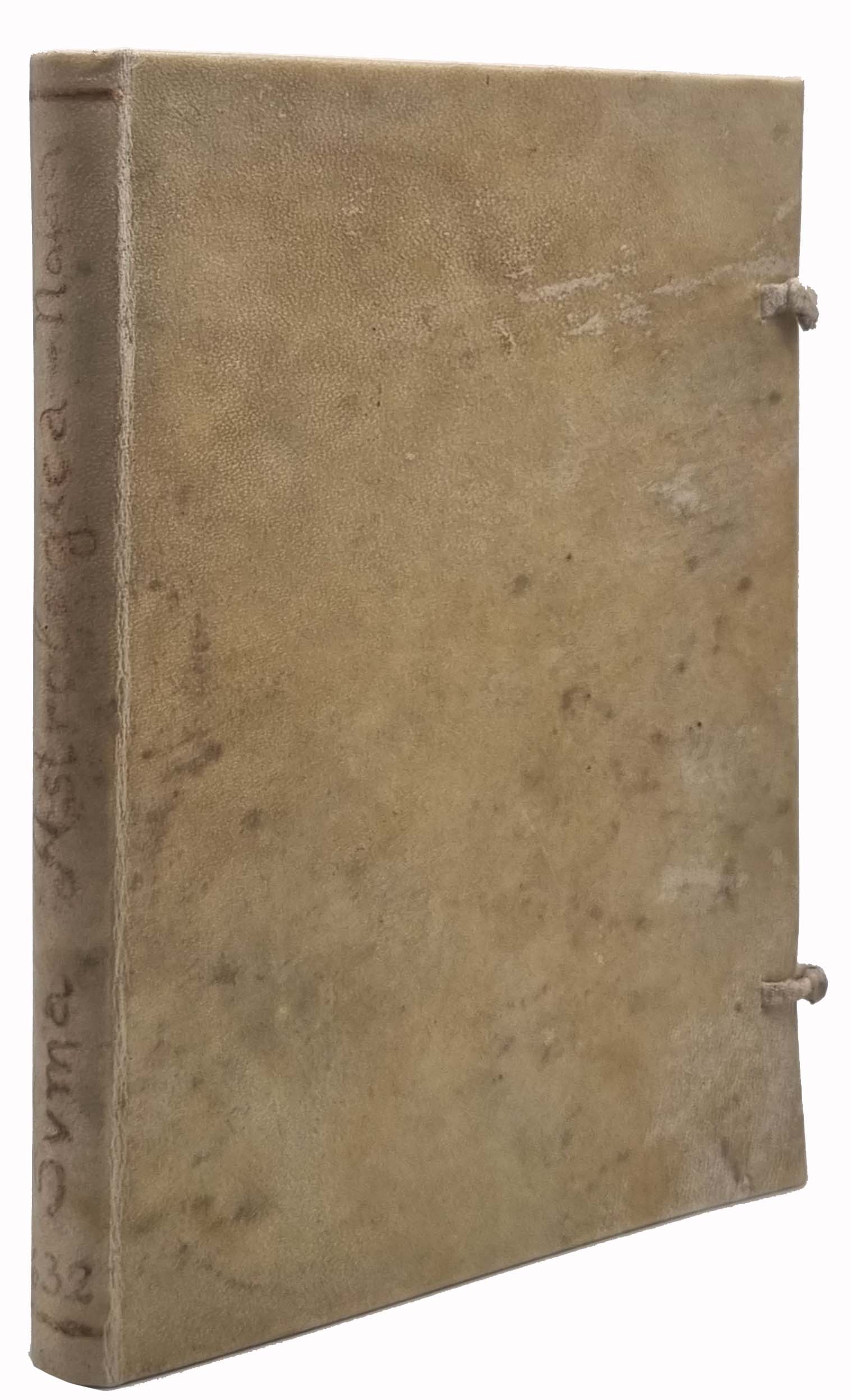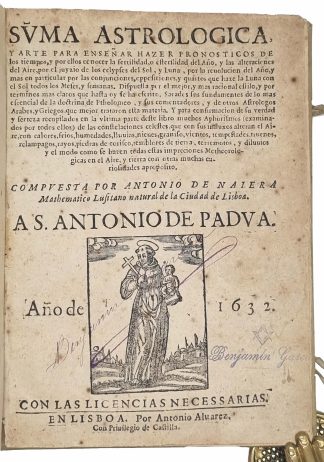NAJERA, Antonio de.
FIRST PORTUGUESE ASTROLOGY
Summa Astrologica.
Lisbon, Antonio Alvarez, 1632.£2,250.00
FIRST EDITION. Small 4to. pp. (viii) 245 [i.e., 243] (v). Roman letter, little Italic. Woodcut t-p vignette of St Anthony of Padua, decorated initials. A few gatherings slightly browned or foxed, small clean vertical tear at foot of title, very faint water stain to lower outer blank corner of few final 4 ll., the odd ink spot. A good, clean copy in modern vellum, two ties, title inked to spine. Early C20 autograph ‘Benjamin Gareau’, his masonic stamp to title.
A good, clean copy of this scarce work, in Spanish, on weather prediction based on planetary observations—the first astrological primer printed in Portugal. The Castilian Antonio de Najera (fl. C17), of whom little is known, was a cosmographer in Portugal, a skilled mathematician, and the author of works on navigation and astrology. ‘The lack of printed astrological manuals in the Portuguese and even in the Spanish languages in the early decades of the C17 made almanacs [‘reportorios’] the main source for astrological knowledge for those who could not read Latin. […] The reportorios were a genre somewhere in between a specialist ephemeris and a basic popular almanac. […] The combination of the common language, popularity, and astrological doctrine made the reportorios of particular concern for the inquisition because of the wider range of readership’ (Ribeiro, 64). ‘Summa astrologica’ berates weather prognostications in such almanacs, produced by ‘ignorant’ astrologers and ‘charlatans’. It defends instead the value of ‘correct’ judicial astrology in answer to the accusations of vagueness and uncertainty moved by science. This Najera opposes incorrect predictions, ‘which are made without method, without science; which defy current knowledge, and utter, like gipsies, vain and monstrous things, in order to charm the people, who will believe them to be oracles’. Prognostications properly done, and their ancient tradition, he believes most important, the correct knowledge of meteorological phenomena being necessary for agriculture, farming, navigation and travel on land, and conducive to good government. The first part introduces the movements and influence of planets, their qualities in relation to the zodiac, the latter’s properties in relation to the sun and fixed stars, and the celestial position of some fixed stars (calculated for Lisbon using Tycho Brahe’s observations for the year 1632). ‘The work appears to be intended for readers who already know astrology, as shown by the fact that Najera does not show how to produce a horoscope’ (Cantamessa). The second part explains how to create predictions through a study of eclipses, the time of the year and lunar phases, following Ptolemy’s theories. It also examines the movement of the air, and the weather accidents it causes, following the doctrines of Albumazar, Alkindo and Messalach. The final part is devoted to specific weather phenomena, including snow, hail, wind, tempests, lightning, earthquakes and flooding. Scarce.
Wilkinson, Iberian Books, 49997; Vindel VI, 1861; Simon Diaz XV, 4749; Palau 187293; Cantamessa 3084; Thorndike VII, 129. L.C. Ribeiro, ‘The Bounded Heavens’, Annals of Science 77 (2020), 50-70.In stock


